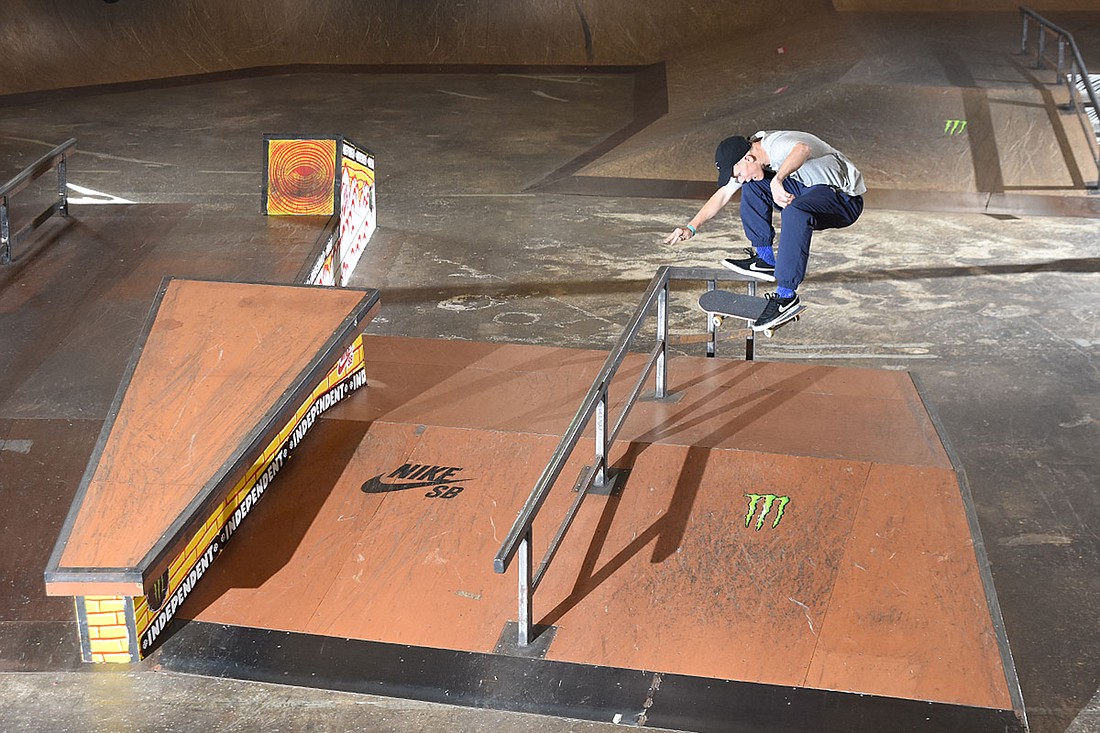- December 28, 2024
-
-
Loading

Loading

Of Sarasota's four athletes headed to Tokyo next month for the Olympics, people might be the most confused about Jake Ilardi, perhaps wondering why he's there at all.
Ilardi, 24, is a skateboarder. If this were 2016, he wouldn't be standing with the other Olympians. This year's Games will be the first to feature skateboarding, which the International Olympic Committee has approved on a trial basis. The sport has also been provisionally approved for the 2024 games in Paris. Four other sports have this trial approval and will make their debut in Tokyo: baseball/softball, surfing, karate and sports climbing.
According to Skate Deluxe, skateboarding began in the 1940s as something for surfers in California to do when not on the waves. But what does skateboarding look like in 2021? What's so impressive about pushing a board around?
Well, skateboarding is no longer about cruising the town looking for a spot to get some grub, though. In the decades since its inception it has become a legitimate sport requiring a lot of skill and just as many guts.
The sport of skateboarding will have two disciplines featured at the Olympics: Street and Park. These disciplines vary not in rules but in feel. The Street course is littered with railings, stairs and small banks meant to mimic what might be found on an actual street in a large city. This is Ilardi's specialty. Street skateboarders try to string together smaller tricks into impressive combos. You could see a skater attempt a kickflip, then attempt to land on a handrail for a grind, then attempt another small trick while jumping off the rail.
For those having trouble seeing this in action, watch this video of Ilardi in action at a 2018 street competition in Henan, China.
In contrast, the Park course is a large bowl. The sides of the bowl, as well as the island in the middle of the bowl, act as ramps. Park skaters focus on landing midair tricks using both their boards and their bodies (spins, etc.)
Both disciplines are scored by a panel of five judges. Street skaters each receive two 45-second "runs" to land as many tricks as they can, then an opportunity to attempt five additional tricks that count as a third run. The judges will grade each run on a 0.0-10.0 scale, 10.0 being a perfect score. The highest and lowest judge scores will be dropped, and the three remaining scores will be averaged together, creating the run's final score. In the event's prelims, the skaters with the highest average run score will advance to the finals. In the finals, well, the highest average run score wins.
Park skating works almost the same way, but skaters receive a third 45-second run instead of street skating's "five additional tricks" round.
Both Park and Street skateboarding have men's and women's divisions. According to World Skate, which has been deemed the sport's governing body, the top-ranked men's Street skater in the world is American Nyjah Huston, who has won the Street League Skateboarding championship five times. Ilardi is the second-ranked American and the seventh-ranked overall skater.
Ilardi said he has been working on switching board stances while training for the Olympics.
"I'm a regular footer, meaning I have my left foot on the front of my board and I push with my right foot," Ilardi said in April. "I have gotten better at skating goofy, which is the opposite of that. Switching stances lets me hit new variations of tricks I couldn't before."
In the men's Park division, American skater Heimana Reynolds is the world's No. 1.
On the women's side, Brazilian skater Pamela Rose will enter ranked No. 1 in Street. The top American Street skater is Mariah Duran (No. 6 overall). In Park, Japan's Misugu Okamoto is No. 1, while the top-ranked American is Bryce Wettstein (No. 8).
The Olympics will begin July 21 with soccer and softball, but Ilardi and his fellow men's Street skaters won't get their chance at glory until July 25. That provides plenty of time to scour YouTube, learn your 50-50 grind from your boardslide and gain appreciation for this burgeoning sport.